 W
WThe North West Company was a fur trading business headquartered in Montreal from 1779 to 1821. It competed with increasing success against the Hudson's Bay Company in what is present-day Western Canada and Northwestern Ontario. With great wealth at stake, tensions between the companies increased to the point where several minor armed skirmishes broke out, and the two companies were forced by the British government to merge.
 W
WThe Beaver Club was a gentleman's dining club founded in 1785 by the predominantly English-speaking men who had gained control of the fur trade of Montreal. According to the club's rules, the object of their meeting was "to bring together, at stated periods during the winter season, a set of men highly respectable in society, who had passed their best days in a savage country and had encountered the difficulties and dangers incident to a pursuit of the fur trade of Canada". Only fragmentary records remain of their meetings, but from these it is clear that the Beaver Club was "an animated expression of the esprit de corps of the North West Company". The men of the Beaver Club were the predecessors of Montreal's Square Milers.
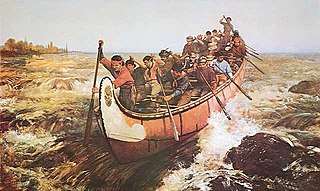 W
WThe Corps of Canadian Voyageurs was raised in September 1812, by the British Army, as a military water transportation corps. Its mission was to maintain the supply lines, between Montreal and the western posts. The corps was disbanded in March 1813, and its mission was taken over by the Canadian branch of the British Commissariat Department, a department of HM Treasury, as the Provincial Commissariat Voyageurs. This corps was disbanded in March, 1815.
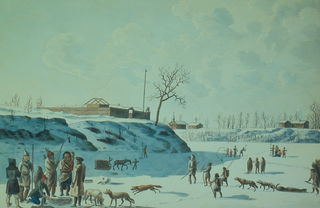 W
WFort Gibraltar was founded in 1809 by Alexander Macdonell of Greenfield of the North West Company in present-day Manitoba, Canada. It was located at the confluence of the Red and Assiniboine rivers in or near the area now known as The Forks in the city of Winnipeg. Fort Gibraltar was renamed Fort Garry after the merger of North West Company and the Hudson's Bay Company in 1821, and became Upper Fort Garry in 1835.
 W
WFort St. Joseph is a former British outpost on the southernmost point of St. Joseph Island in Ontario, Canada, on Lake Huron. The fort consisted of a blockhouse, powder magazine, bakery building, Indian council house and storehouse surrounded by a palisade. Situated on approximately 325 hectares along the St. Mary's River, Fort St. Joseph was the staging ground for the initial attack in the War of 1812. The fort was an important military outpost and a significant meeting place for trade and commerce in the region. During its short but illustrious occupation, it was the British Empire's most westerly outpost. Today, Fort St. Joseph is operated by Parks Canada and is designated a National Historic Site of Canada.
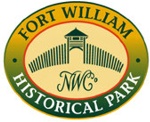 W
WFort William Historical Park is a Canadian historical site located in Thunder Bay, Ontario, that contains a reconstruction of the Fort William fur trade post as it existed in 1816. It officially opened on July 3, 1973.
 W
WFort William was a city in Ontario, Canada, located on the Kaministiquia River, at its entrance to Lake Superior. It amalgamated with Port Arthur and the townships of Neebing and McIntyre to form the city of Thunder Bay in January 1970. Since then it has been the largest city in Northwestern Ontario. The city's Latin motto was A posse ad esse, featured on its coat of arms designed in 1900 by town officials, "On one side of the shield stands an Indian dressed in the paint and feathers of the early days; on the other side is a French voyageur; the center contains an [grain] elevator, a steamship and a locomotive, while the beaver surmounts the whole."
 W
WGovernor Simcoe was a merchant schooner launched in 1793. The Provincial Marine acquired her in 1813 and renamed her after the British naval officer Sir Sidney Smith. She saw service on Lake Ontario during the War of 1812. The Royal Navy acquired her in 1814 and renamed her HMS Magnet. A few months later her captain had to blow her up to prevent the Americans from capturing the vessel.
 W
WGrand Portage National Monument is a United States National Monument located on the north shore of Lake Superior in northeastern Minnesota that preserves a vital center of fur trade activity and Anishinaabeg Ojibwe heritage. The area became one of the British Empire's four main fur trading centers in North America, along with Fort Niagara, Fort Detroit, and Michilimackinac.
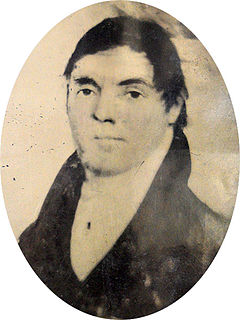 W
WCuthbert James Grant was a prominent Métis leader of the early 19th century. His father was also called Cuthbert Grant.
 W
WJasper House National Historic Site, in Jasper National Park, Alberta, is the site of a trading post on the Athabasca River that functioned in two different locations from 1813 to 1884 as a major staging and supply post for travel through the Canadian Rockies.
 W
WSir Alexander Mackenzie was a Scottish explorer known for accomplishing the first east to west crossing of America north of Mexico in 1793, which preceded the more famous Lewis and Clark Expedition by 12 years. The Mackenzie River is named after him.
 W
WLt.-Colonel The Hon. William McGillivray, of Chateau St. Antoine, Montreal, was a Scottish-born fur trader who succeeded his uncle as the last chief partner of the North West Company. He was elected a member of the Legislative Assembly of Lower Canada and afterwards was appointed to the Legislative Council of Lower Canada. In 1795, he was inducted as a member into the Beaver Club. During the War of 1812 he was given the rank of lieutenant colonel in the Corps of Canadian Voyageurs. He owned substantial estates in Scotland, Lower and Upper Canada. His home in Montreal was one of the early estates of the Golden Square Mile. McGillivray Ridge in British Columbia is named for him.
 W
WMcLeod Lake is an unincorporated community located on Highway 97 in northern British Columbia, Canada, 140 km (87 mi) north of Prince George. It is notable for being the first continuously inhabited European settlement established west of the Rocky Mountains in present-day Canada.
 W
WThe Métis are Indigenous peoples in the three Prairie Provinces, as well as parts of Ontario, British Columbia, the Northwest Territories, Atlantic Canada, and the Northern United States. They have a shared history and culture and are of mixed Indigenous and European ancestry which became a distinct group through ethnogenesis by the mid-18th century, during the fur trade era.
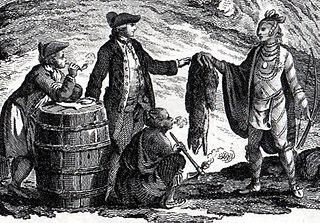 W
WThe North American fur trade refers to the commercial trade in furs in North America. Various indigenous people of the Americas traded furs with other tribes during the pre-Columbian era. Europeans started their participation in the North American fur trade from the initial period of their colonization of the Americas onward, extending the trade's reach to Europe. European merchants from France, England and the Dutch Republic established trading posts and forts in various regions of North America to conduct the trade with local indigenous tribes. The trade reached the peak of its economic importance in the 19th century, by which time it relied upon elaborately developed trade networks.
 W
WIn January 1814 Governor Miles MacDonell, appointed by Thomas Douglas, 5th Earl of Selkirk issued to the inhabitants of the Red River area a proclamation which became known as the Pemmican Proclamation. The proclamation was issued in attempt to stop the Métis people from exporting pemmican out of the Red River district. Cuthbert Grant, leader of the Métis, disregarded MacDonell's proclamation and continued the exportation of pemmican to the North West Company. The proclamation overall, became one of many areas of conflict between the Métis and the Red River settlers. Thomas Douglas, 5th Earl of Selkirk had sought interest in the Red River District, with the help of the Hudson's Bay Company as early as 1807. However, it was not until 1810 that the Hudson's Bay Company asked Lord Selkirk for his plans on settling in the interior of Canada.
 W
WThe Pemmican War was a series of armed confrontations during the North American fur trade between the Hudson's Bay Company (HBC) and the North West Company (NWC) in the years following the establishment of the Red River Colony in 1812 by Lord Selkirk. It ended in 1821 when the NWC merged with the HBC.
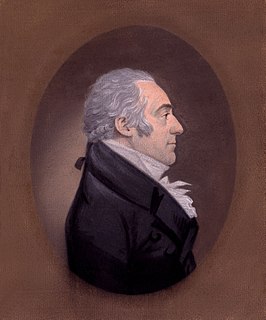 W
WThe Hon. John Richardson,, M.P., J.P., was a Scots-Quebecer and arguably Montreal's leading businessman in his time. In trade, he was in partnership with his first cousin, John Forsyth. A member of the Beaver Club, he established the XY Company and co-founded the Bank of Montreal. A staunch Conservative and Royalist, he represented Montreal East in the 1st Parliament of Lower Canada; assuming the role of the voice of the merchants and appointed an honorary member of the Executive Council of Lower Canada. An intellectual, he was President of the Natural History Society of Montreal and well read in modern and ancient history, law, economics, and British poetry. He was a generous patron to both the Presbyterian and the Anglican Churches, and the first President of the Montreal General Hospital, where the west wing was named for him.
 W
WThe Sault Ste. Marie Canal is a National Historic Site in Sault Ste. Marie, Ontario, and is part of the national park system, managed by Parks Canada. It includes a lock to bypass the rapids on the St. Marys River.
 W
WThe Battle of Seven Oaks was a violent confrontation in the Pemmican War between the Hudson's Bay Company (HBC) and the North West Company (NWC), rivals in the fur trade, that took place on 19 June 1816, the climax of a long dispute in western Canada. The Métis people fought for the North West Company, and they called it "the Victory of Frog Plain".
 W
WThe Snake River Fur Post is a reconstructed fur trade post on the Snake River west of Pine City, Minnesota, United States of America. The post was established in the fall of 1804 by John Sayer, a partner in the North West Company, and built by his crew of voyageurs. The site operated for several years, although its exact period of operation is unknown. It was later destroyed by fire.
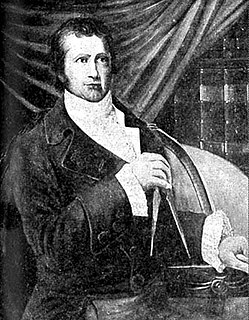 W
WDavid Thompson was a British-Canadian fur trader, surveyor, and cartographer, known to some native peoples as Koo-Koo-Sint or "the Stargazer". Over Thompson's career, he traveled 90,000 kilometres (56,000 mi) across North America, mapping 4.9 million square kilometres of North America along the way. For this historic feat, Thompson has been described as the "greatest practical land geographer that the world has produced".
 W
WThe voyageurs were 18th and 19th century French Canadians who engaged in the transporting of furs via canoe during the peak of the North American fur trade. The emblematic meaning of the term applies to places and times where transportation of materials was mainly over long distances. The voyageurs were regarded as legendary. They were heroes celebrated in folklore and music. For reasons of promised celebrity status and wealth, this position was coveted.
 W
WThe War of 1812 was a conflict fought by the United States of America and its indigenous allies against Great Britain and its allies in British North America, with limited participation by Spain in Florida. It began when the US declared war on 18 June 1812 and although peace terms were agreed in the December 1814 Treaty of Ghent, did not officially end until ratified by Congress on 17 February 1815.
 W
WWhatì, officially the Tłı̨chǫ Community Government of Whatì is a First Nations community in the North Slave Region of the Northwest Territories, Canada. Whatì is located by Lac La Martre, about 164 km (102 mi) northwest of the territorial capital of Yellowknife.